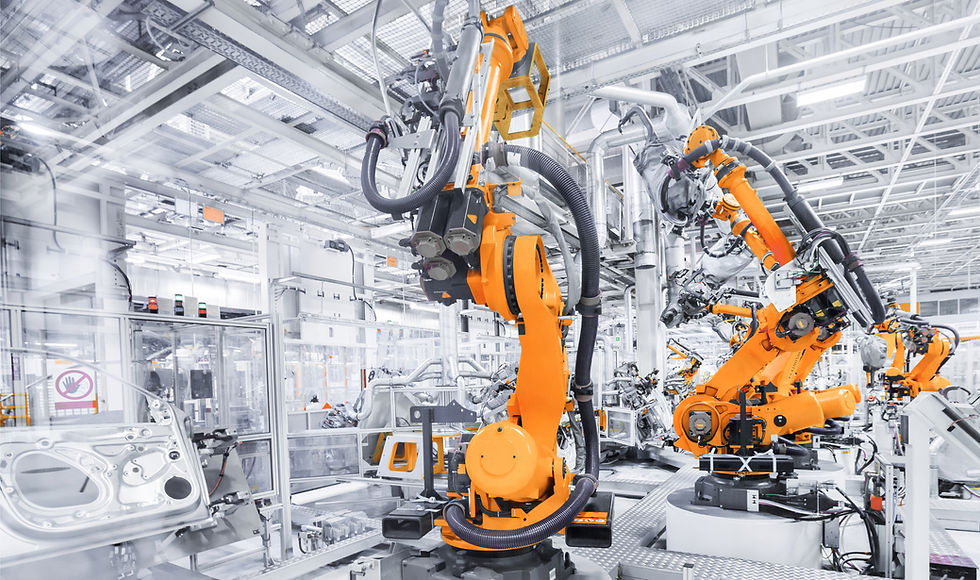Understanding the Economic Impacts of Tariffs on the United States in 2025
- Martin Low

- May 9
- 5 min read
Tariffs, often seen as simple taxes on imported goods, are much more than that. They shape consumer choices, influence industry profitability, and play a major role in international relations. This post delves into the expected economic effects of tariffs in the United States as we move through 2025.

What Are Tariffs?
Tariffs are taxes on imported products that increase their prices. The goal here is to encourage consumers to buy goods made domestically, supporting local businesses. For example, if a tariff is placed on imported steel, it becomes more expensive than American-made steel, prompting builders to choose local supplies.
However, such measures come with trade-offs. While the government collects revenue from these taxes to fund services, they can also lead to increased prices for consumers and strained international relationships.
Why Do Tariffs Matter?
Tariffs have significant consequences for the economy:
Consumer Prices: Research shows that tariffs can increase consumer prices by about 10-15%. When tariffs are imposed, businesses often raise their prices to maintain profit margins. For instance, a tariff on aluminum could raise the price of canned beverages by 5%, affecting everyday consumers.
Trade Relationships: Tariffs can lead to retaliation from other countries, escalating into trade wars. For example, when the U.S. increased tariffs on Chinese goods, China responded with tariffs on American agricultural exports.
Domestic Industry Protection: While tariffs support local industries by making foreign competition less appealing, they can also lead to complacency and inefficiency. Local companies might not feel the pressure to innovate.
Economic Growth: Higher tariffs can dampen economic growth. According to a 2022 study, a 1% increase in tariffs could result in a 0.2% decrease in GDP growth, as higher costs can limit consumer spending and investment.

The Outlook for Tariffs in 2025
As we approach 2025, the landscape of tariffs will likely continue to shift. Several factors will influence this dynamic environment:
Political Climate Shaping Tariffs
Political changes significantly affect tariff policies. For example, during a term when protectionist policies are favored, we might see an increase in tariffs on a wide range of goods. In contrast, an administration leaning towards free trade could lower tariffs to foster international commerce.
Upcoming elections often shift public opinion about tariffs. A new administration that supports globalization could lead to reduced tariffs, while a rise in nationalist sentiment might push for more protective measures.

Global Trade Agreements
International trade agreements play a key role in tariff structures. For instance, the United States-Mexico-Canada Agreement (USMCA) replaced NAFTA and reshaped tariffs among these nations. As countries negotiate new agreements or amend existing ones, the structure of tariffs could change.
Staying informed about these agreements is vital for predicting how tariffs will fluctuate in the coming years.

Economic Conditions: Inflation and Consumer Spending
Tariffs are closely tied to inflation. If inflation continues to rise, demands for tariffs may grow as a stabilizing measure. However, high tariffs can also contribute to inflation by making imported goods costlier.
Consumer spending will be paramount. If individuals feel financial pressure, they might turn to cheaper imports, which undermines tariff intentions. Data from 2023 showed that when consumers faced high inflation, purchases of imported goods increased by 8% as budget-conscious buyers sought lower prices.

The Effects of Tariffs on Industry Sectors
Different sectors of the economy experience the impacts of tariffs in unique ways. Let’s consider a few:
Manufacturing Sector
The manufacturing sector often feels the most direct impact from tariffs. For instance, a tariff on imported steel can lead to an increase in business for local steel producers, yet it can drive up costs for manufacturers relying on that steel for production.
If manufacturing costs rise by 15% due to tariffs, companies may choose to cut jobs or automate processes to save money, which can negatively influence employment rates.

Agriculture
The agricultural sector is another crucial area affected by tariffs. Farmers often benefit when foreign food imports are taxed, as they face less competition. However, retaliatory tariffs can hurt exports. For example, if Europe imposes tariffs on American corn, U.S. farmers could see a revenue drop of up to 20%, significantly impacting their livelihoods.

Technology
Technology relies on global supply chains. Tariffs can lead to increased costs for components sourced abroad. For example, if a 25% tariff is imposed on computer chips from Asia, companies may see a notable rise in production costs, which could lead to price hikes for consumers or reduced profits for tech firms.

Final Thoughts
Understanding the role of tariffs is essential as we approach 2025. They shape consumer behavior, influence political agendas, and impact different industry sectors.
By recognizing how tariffs affect pricing and trade, consumers can navigate the economic landscape more effectively. As the political and global trade climates change, so too will tariff policies. Staying informed means being better prepared for the implications tariffs will have on daily life and the broader economy.
The tariff landscape is complex, and the developments in 2025 will reveal how interconnected global economies truly are. Tracking political shifts, trade negotiations, and economic indicators will provide valuable insights into the ongoing effects of tariffs in the United States.








Comments